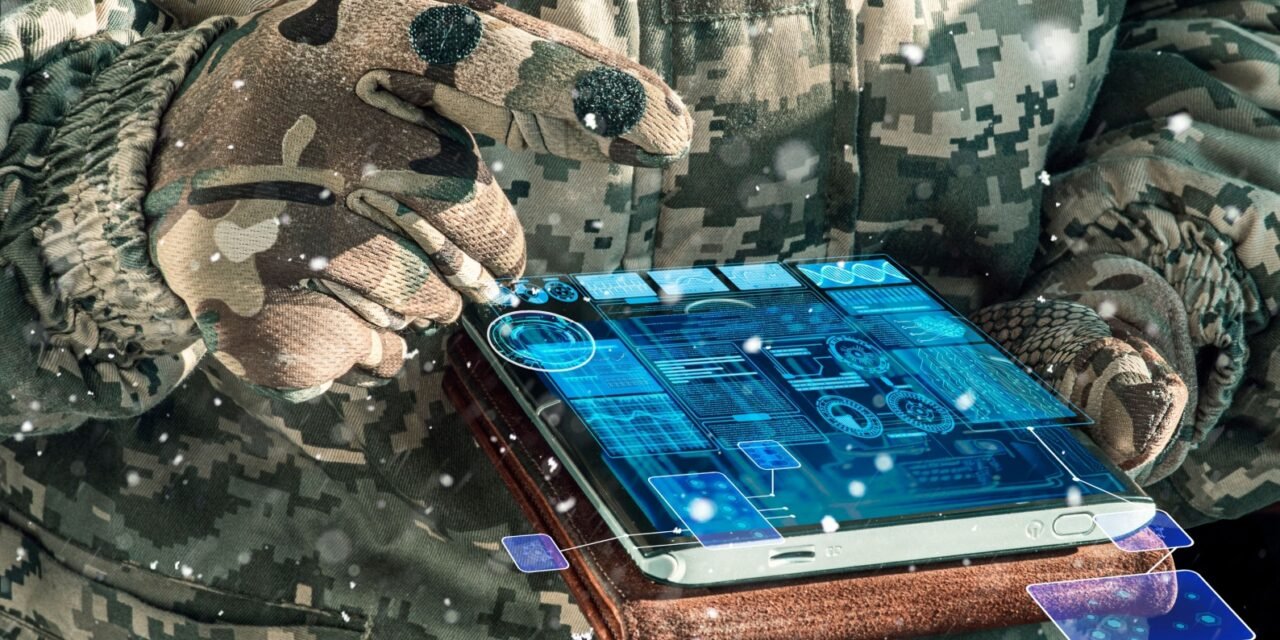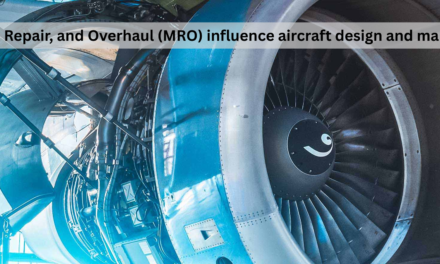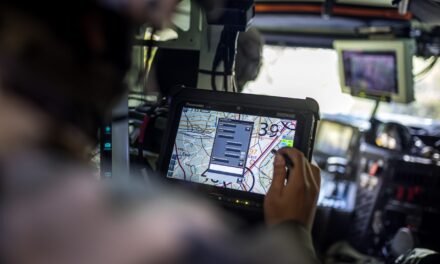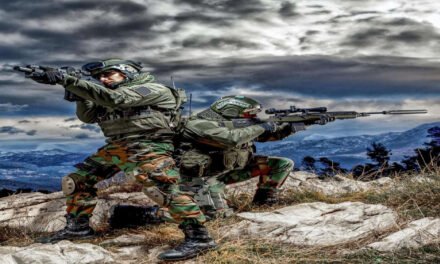Robotics and artificial intelligence (AI) are revolutionizing modern military equipment by enhancing operational capabilities, improving efficiency, and reducing risks to human soldiers. These technologies are integrated across various military platforms and domains, enabling smarter decision-making, automation, and advanced combat systems. Here’s how robotics and AI are integrated into modern military equipment:
1. Autonomous Vehicles
- Unmanned Aerial Vehicles (UAVs):
- AI enables drones to perform autonomous surveillance, reconnaissance, and combat missions.
- Examples: Predator drones for reconnaissance and combat, and AI-driven swarms for coordinated attacks.
- Unmanned Ground Vehicles (UGVs):
- UGVs are deployed for reconnaissance, explosive ordnance disposal (EOD), and logistics in dangerous environments.
- Example: Robotic systems like the TALON for EOD and MAARS for combat support.
- Unmanned Underwater Vehicles (UUVs):
- Used for mine detection, underwater reconnaissance, and submarine tracking.
- Example: REMUS for underwater mapping and surveillance.
2. AI-Driven Targeting Systems
- Smart Weaponry:
- AI-enhanced systems improve targeting accuracy and reduce collateral damage by identifying and engaging threats autonomously.
- Example: Loitering munitions like Israel’s Harop drone that autonomously seeks and destroys targets.
- Fire Control Systems:
- AI optimizes weapon performance by calculating trajectories, environmental factors, and threat prioritization in real time.
3. Robotics in Combat Support
- Logistics and Supply Chain:
- Autonomous vehicles and robots transport supplies, ammunition, and equipment in challenging or contested areas.
- Example: Robotic mules for troop resupply in rugged terrains.
- Combat Medical Support:
- Robots perform medical evacuations and deliver telemedicine capabilities in high-risk zones.
- Example: Battlefield extraction robots and robotic surgical systems.
4. Surveillance and Reconnaissance
- AI-Powered Surveillance:
- AI algorithms analyze data from sensors, cameras, and satellites to identify threats, monitor areas, and predict adversary actions.
- Example: AI systems processing satellite imagery to locate hidden missile sites or troop movements.
- Persistent Monitoring:
- Swarms of drones provide constant real-time situational awareness over large areas.
5. Advanced Battlefield Robotics
- Autonomous Combat Robots:
- Armed robots are deployed for offensive operations, capable of navigating terrain and engaging targets with minimal human intervention.
- Example: Russia’s Uran-9, an armed UGV.
- AI-Driven Swarm Tactics:
- Groups of drones or robots coordinate autonomously to overwhelm adversaries, execute precision strikes, or defend key assets.
6. Cyber Warfare and Electronic Defense
- AI in Cybersecurity:
- AI systems detect, analyze, and respond to cyberattacks faster than human operators, protecting critical military networks.
- Example: Machine learning models identifying malware or anomalies in real-time.
- Electronic Warfare:
- AI-driven systems identify and counter enemy electronic signatures, disrupting communications, radar, and targeting systems.
7. Decision Support and Command Systems
- Battlefield Management:
- AI integrates and analyzes data from multiple sources to provide commanders with actionable insights, reducing decision-making time.
- Example: AI-powered command and control systems that predict enemy actions and recommend strategies.
- Predictive Analytics:
- AI forecasts equipment failures, troop movements, or supply needs, enhancing operational efficiency.
8. Robotics in Training and Simulation
- AI-Powered Simulations:
- Virtual reality (VR) and AI create realistic training scenarios, enabling soldiers to prepare for complex battlefield conditions.
- Example: AI adversaries in simulations adapt and respond to trainees’ tactics.
- Robot-Based Training Aids:
- Robots simulate combatants or scenarios for live training exercises.
9. Human-Machine Teaming
- Enhanced Soldier Performance:
- AI systems provide real-time battlefield intelligence, reducing cognitive load and improving decision-making.
- Example: Augmented reality (AR) integrated into helmets, displaying tactical information.
- Collaborative Operations:
- Humans work alongside AI-driven systems, where robots handle repetitive or high-risk tasks, allowing soldiers to focus on strategic objectives.
10. Autonomous Weapon Systems
- Lethal Autonomous Weapon Systems (LAWS):
- AI-powered weapons identify, track, and engage targets independently or with limited human oversight.
- Example: Autonomous sentry guns like South Korea’s SGR-A1.
- Non-Lethal Applications:
- Systems for crowd control, area denial, or disabling enemy equipment using non-lethal means.
11. AI in Maintenance and Logistics
- Predictive Maintenance:
- AI predicts equipment failures before they occur, ensuring readiness and reducing downtime.
- Example: AI-driven diagnostics for aircraft, vehicles, and naval systems.
- Autonomous Supply Chains:
- Robotic systems manage inventory, resupply operations, and transportation logistics in high-stress scenarios.
12. AI in Space-Based Systems
- Satellite Operations:
- AI optimizes satellite performance, automates adjustments, and analyzes data from space-based assets.
- Space Domain Awareness:
- Detecting and tracking potential threats to satellites and other space-based systems.
13. Ethical and Legal Considerations
- Autonomy and Accountability:
- Integrating AI and robotics raises ethical concerns about decision-making in lethal operations and adherence to international law.
- Human Oversight:
- Systems are designed with varying levels of human control, from full autonomy to human-in-the-loop or human-on-the-loop configurations.
14. Future Trends
- AI-Driven Battlefield Ecosystems:
- Fully integrated systems where AI coordinates all battlefield assets, from drones and tanks to soldiers and command centers.
- Biomimetic Robots:
- Robots mimicking natural organisms for stealthy reconnaissance or combat roles.
- Quantum AI:
- Quantum computing paired with AI will revolutionize decision-making and optimization for military operations.
Strategic Advantages
- Force Multiplication:
- AI and robotics enhance operational capacity, allowing fewer personnel to achieve greater impact.
- Risk Reduction:
- Reducing human exposure to dangerous environments, especially in reconnaissance, EOD, and high-intensity combat.
- Operational Efficiency:
- Faster, data-driven decision-making and autonomous systems streamline complex operations.
In conclusion, robotics and AI are integral to modern military equipment, transforming the battlefield through autonomy, intelligence, and efficiency. Their continued development promises to redefine warfare, emphasizing precision, adaptability, and reduced human risk.
Hashtags
#MilitaryRobotics #AIInDefense #SmartMilitaryTech #DefenseInnovation #AIAndRobotics #AutonomousSystems #AutonomousWeapons #UnmannedSystems #AIInWarfare #AutonomousDefense #SmartBattlefield #RoboticApplications #CombatRobots #RoboticsInMilitary #DroneTechnology #RoboticWarfare













